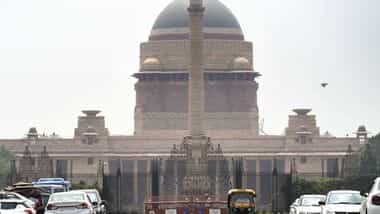President Election: According to Election Commission’s directions, while MPs will get a green-coloured ballot paper, the MLAs will get a pink ballot paper to cast vote. Separate colours help the returning officer ascertain the value of vote of each MLA and MP.
The term of office of Ram Nath Kovind, President of India, is ending on 24 July. As per Article 62 of the Constitution of India, an election to fill the vacancy caused by the expiration of the term of office of the outgoing President is required to be completed before the expiration of the term.
Nearly 4,800 elected MPs and MLAs will vote on Monday to elect the 15th President of India, with NDA candidate Droupadi Murmu having a clear edge over Opposition’s Yashwant Sinha as over 60 per cent votes are expected to be cast in her favour.
Election of 15th President of India: All you need to knowAs per the Article 54 of the Constitution of India, the President is elected by the members of the Electoral College consisting of:
elected members of both Houses of Parliament, and elected members of the Legislative Assemblies of all States including National Capital Territory of Delhi and the Union Territory of Puducherry.The polling will take place in Parliament House and state legislative assemblies between 10 am and 5 pm for which ballot boxes have already reached their destinations.
For marking the vote, the Commission will supply particular pens. The pen will be given to the electors in the polling station by the designated official when the ballot paper is handed over. Electors have to mark the ballot only with this particular pen and not with any other pen. Voting by using any other pen shall lead to invalidation of the vote at the time of counting.
Normally, Members of Parliament are expected to cast their votes at the place of polling in the Parliament House, New Delhi. Similarly, Members of State Legislative Assemblies are expected to vote at the respective State Legislative Assembly.However, on account of any exigency or special circumstances, the Members of Parliament can vote in any of the approved places of polling in the Legislative Assemblies of States/NCT of Delhi/UT of Puducherry. In similar conditions, any MLA may vote at the place of polling in Parliament House, New Delhi or in any of the approved places of polling in the Legislative Assembly of other States/NCT of Delhi/UT of Puducherry.
The counting of votes will take place at Parliament House on July 21 and the next President will take oath on July 25.
With the support of regional parties such as BJD, YSRCP, BSP, AIADMK, TDP, JD(S), Shiromani Akali Dal, Shiv Sena and now JMM, Murmu’s vote share is likely to reach nearly two-thirds and she is set to become the first woman from the tribal community to occupy the top constitutional post. The National Democratic Alliance (NDA) nominee now has over 6.67 lakh votes after the support of various regional parties, out of a total of 10,86,431 votes.The value of vote of an MLA varies in different states. In Uttar Pradesh, the value of vote of each MLA stands at 208, followed by 176 in Jharkhand and Tamil Nadu. In Maharashtra, it is 175. In Sikkim, the value of vote per MLA is seven, while it is nine in Nagaland and eight in Mizoram.
These preferences for the candidates are to be marked by the elector, by placing the figures 1, 2, 3, 4, 5 and so on, against the names of the candidates, in the order of preference, in the space provided in column 2 of the ballot paper.
According to Election Commission’s directions, while MPs will get a green-coloured ballot paper, the MLAs will get a pink ballot paper to cast vote. Separate colours help the returning officer ascertain the value of vote of each MLA and MP.

source:livemint

